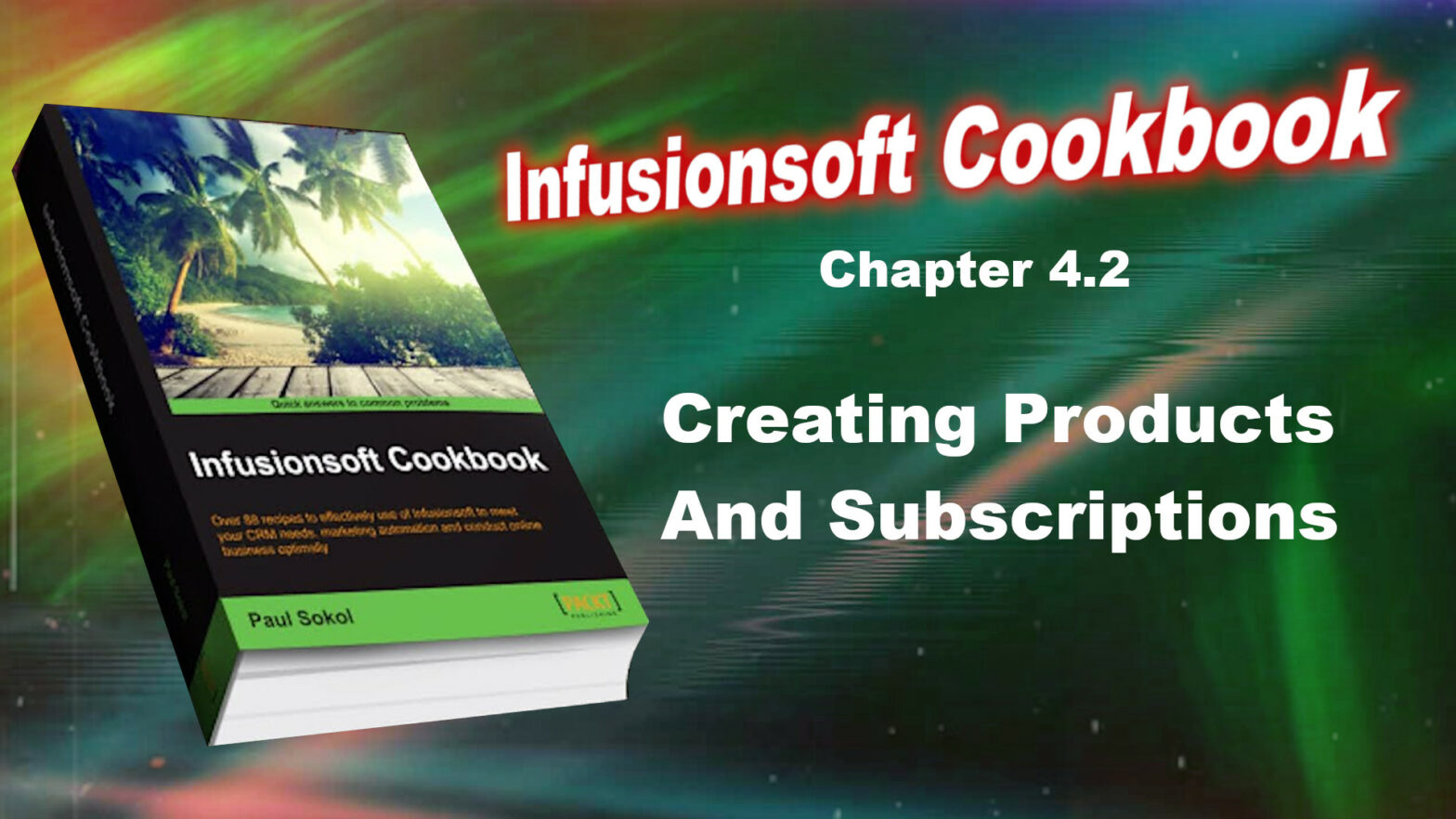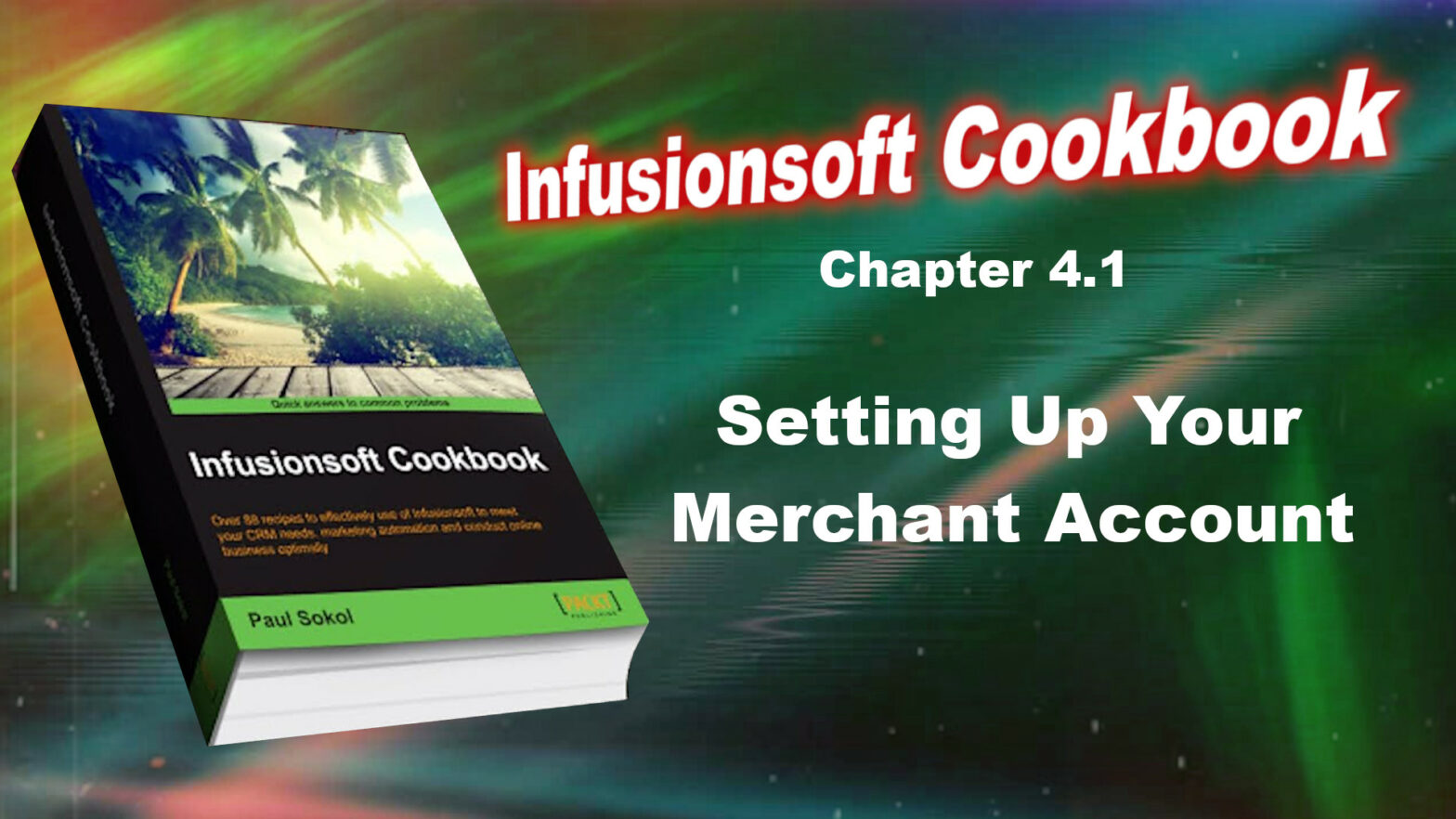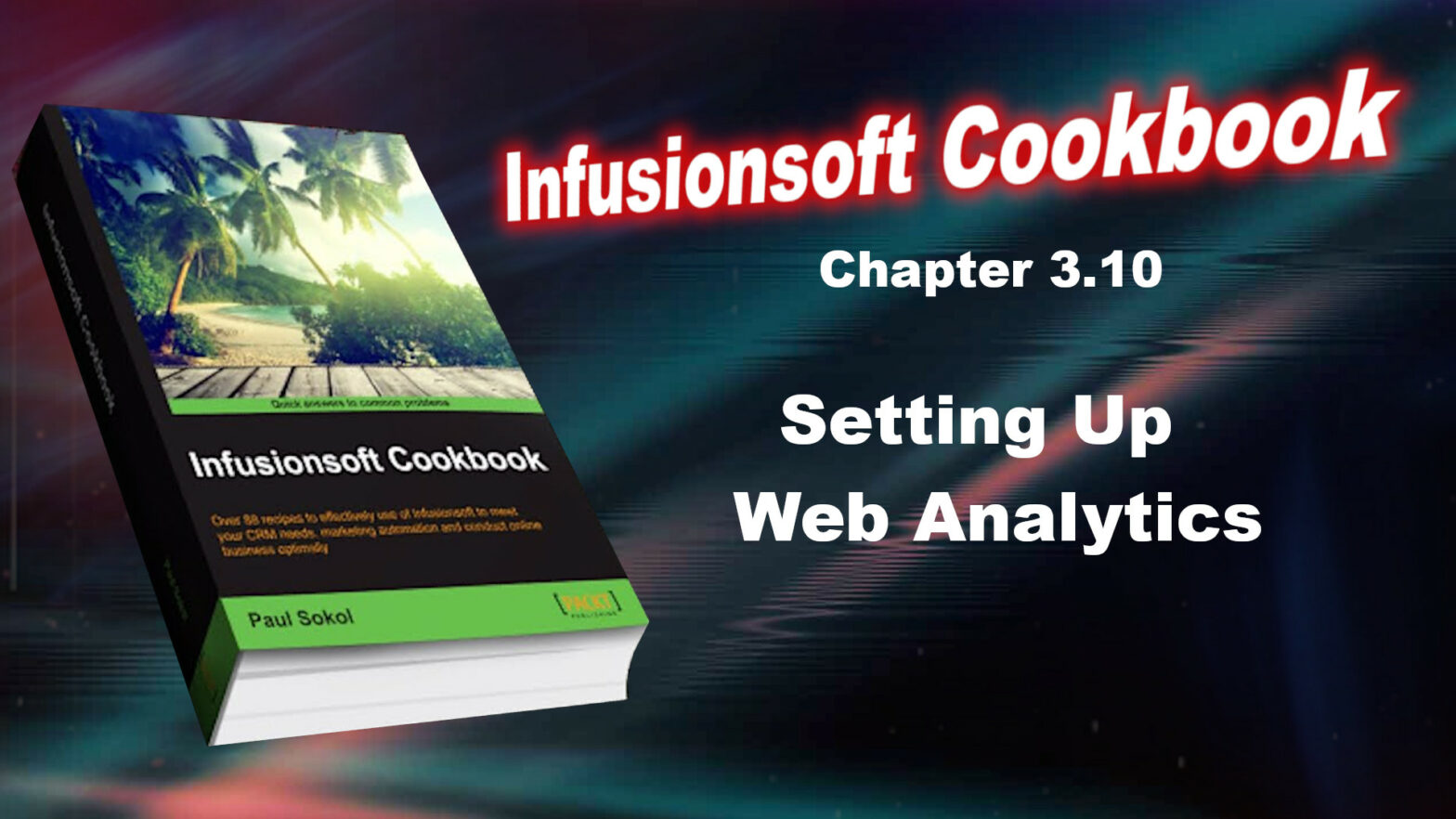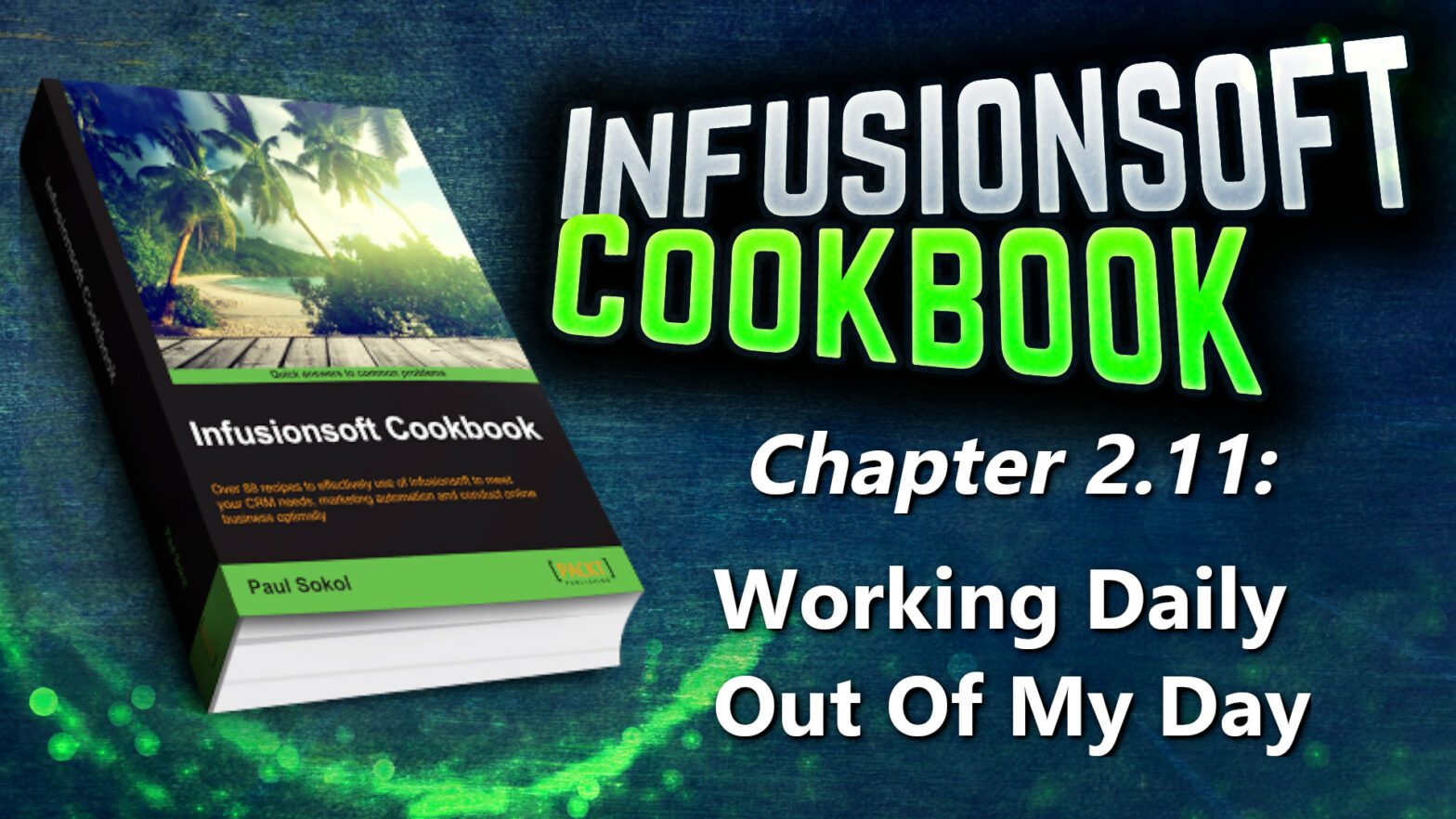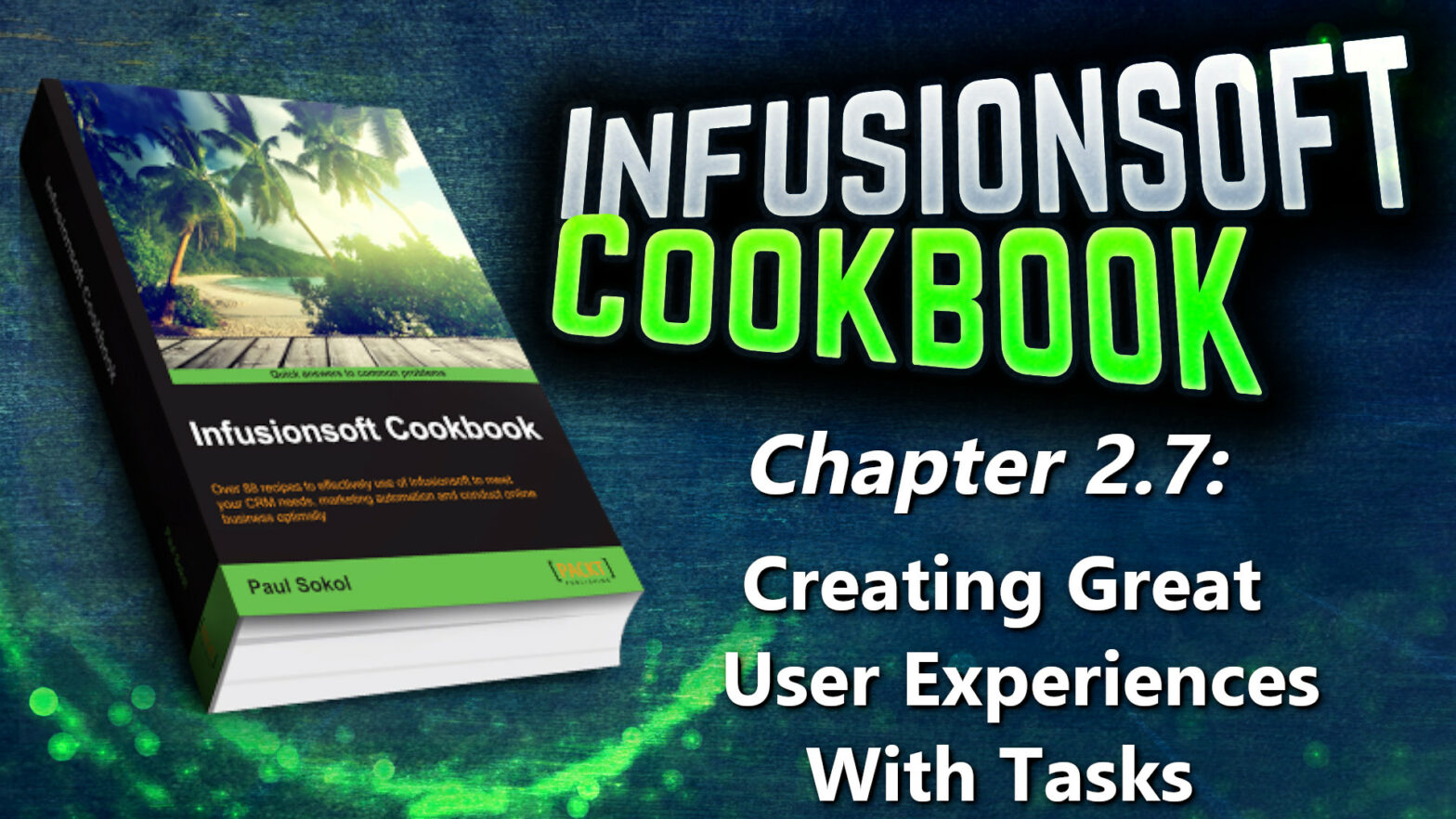Now that our merchant account is set up, we can lay the foundation for the different types of selling available. Whether we are selling products through the shopping cart, order forms, opportunities, having the products and/or subscriptions configured unlocks the selling power of Infusionsoft.This recipe has two versions. The first version is for a single purchase product such as a consumable, a one-off service, or a digital asset. The second version is for a recurring purchase product such as a program subscription or monthly service.
Tag: CRM
Infusionsoft Cookbook – Chapter 4.1 – Setting Up Your Merchant Account
The best way to collect payment for our goods and services using Infusionsoft is to connect a merchant account, so we can accept credit cards.
There are many different providers in the world, and Infusionsoft works with a handful of them. The setup is similar for all providers, and the only difference is the specific credentials each one uses. After completing this recipe, we will be able to collect payment through the shopping cart and order forms.
Infusionsoft Cookbook – Chapter 3.10 – Setting Up Web Analytics
Keap has some built-in web tracking that creates anonymous visitor profiles per device. When someone opts in through a web form, if there is a visitor profile for that device, Keap will merge their visitor activity into the contact record. This allows us to dig deeper into the browsing behavior of our database. This recipe shows how to find the web analytics tracking code so it can be placed on your website(s).
Infusionsoft Cookbook – Chapter 2.11 – Working Daily Out Of My Day
To close out this chapter, we are going to explore the task completion workflow that an end user would experience in their daily responsibilities. Understanding this end user context helps us design automation that can truly streamline processes and boost productivity. For this recipe, we are focusing on the workflow of someone who receives tasks to call new leads and must indicate the results via a note template or internal form. The recipe will take us through one call task. To close out this chapter, we are going to explore the task completion workflow that an end user would experience in their daily responsibilities. Understanding this end user context helps us design automation that can truly streamline processes and boost productivity.
Infusionsoft Cookbook – Chapter 2.7 – Creating Great User Experiences With Tasks
Not everything can be automated. There are certain activities that are too precise or too costly to automate. For example, making an outbound phone call to a new lead or adding a new customer to a third-party membership site. In these cases, an Infusionsoft user can be assigned a task. A task is a key tactic in the human-machine interaction within Infusionsoft. When the automation cannot go any further and needs human intervention, empowering the end user to quickly take action and tell the automation machine to continue is a key skill towards designing productive automated experiences.
Infusionsoft Cookbook – Chapter 2.6 – Using Internal Forms And Note Templates For Workflow
An internal form is just like a normal web form, but it can only be submitted by a user inside Infusionsoft. While creating process workflows, especially task-based workflows, a well-placed internal form can create a time-saving experience for the Infusionsoft user, thus improving productivity. Many of the recipes in this book leverage internal forms, so understanding the experience of submitting one is a key to building a great workflow. A note template is like a big red AUTOMATION button. Any time we need to automate or track something and we aren’t sure how to do it, we can create a note template. Applying a note template can trigger an e-mail, a task, the application of a tag, and so on. Many of the recipes in this book leverage note templates, so understanding the experience of applying one to a contact record is a key to building a great workflow.
Infusionsoft Cookbook – Chapter 2.5 – Creating Tags For Database Segmentation
The more targeted and relevant our marketing is, the more effective it will be. In order to segment the database so we can be targeted and relevant, Infusionsoft uses tags. A tag can be thought of as a specific list or specific segment of people within your database. We can apply or remove a tag manually from an individual or a group of individuals. A campaign can automatically apply or remove a tag as well. Besides segmentation, a tag can route automation logic or filter a search/report. They can also be used as a goal within a campaign to start or stop it. In short, understanding how to create a tag is a critical skill for automated experience design.
